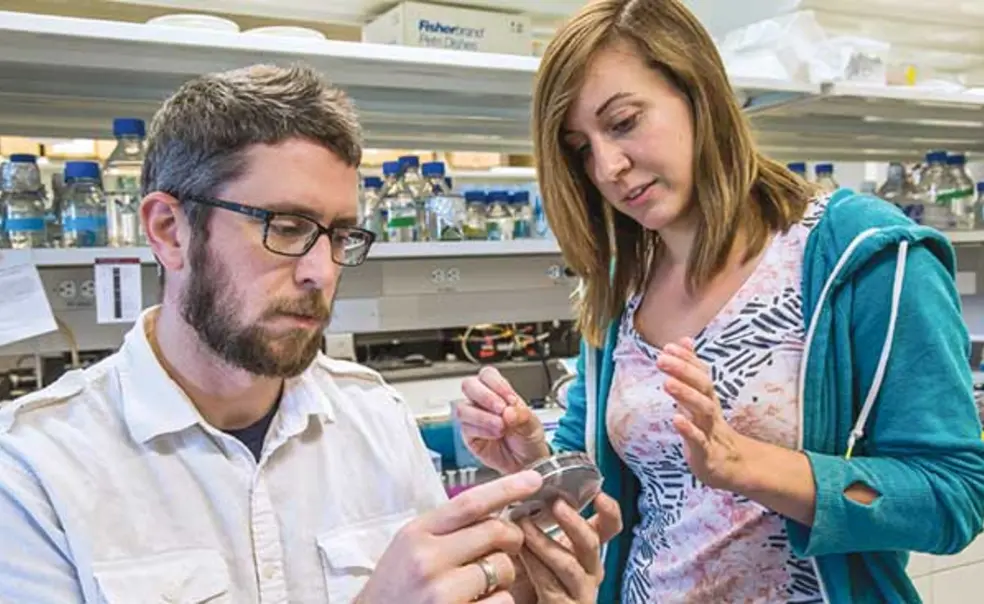Bioengineering: Investing in a New Frontier
Exciting things are happening at the intersection between molecular biology and engineering. Several of Princeton’s extraordinary faculty members are conducting research that may help to address some of society’s most vexing problems.
As is often the case at Princeton, this trail-blazing work builds upon breakthroughs in fundamental science. For over half a century, molecular biology has made significant strides in understanding the biological systems that underpin human life, health, and the environment. More recently, and especially in the past two decades, advancements in tools and methodologies have vastly improved scientists’ ability to describe the functions of living organisms in quantitative terms. Simply put, biological science has become more mathematical.
When scientists describe systems mathematically, engineers can bring their methods to bear upon them. Engineers are now applying to biology the kinds of insights and techniques that they previously applied to physical and chemical systems. These emerging approaches are beginning to yield applications in a wide range of domains.
For example, this fall engineering alumna Frances Arnold ’79 won the 2018 Nobel Prize in Chemistry for pioneering the directed evolution of enzymes. Her technique is now regularly used in the synthesis of chemical substances, from pharmaceuticals to biofuels. A professor of chemical engineering, bioengineering, and biochemistry at Caltech, Arnold is now the first female Princeton undergraduate or graduate alumna to win a Nobel Prize. She is also the first undergraduate alum, male or female, ever to win a Nobel Prize in the natural sciences.
This intersection of biology, engineering, and quantitative analysis — where the most exciting biological research is taking place — lies squarely within one of Princeton’s core strengths. The University’s mathematical and computational excellence dates back to Alonzo Church ’24 *27, John von Neumann, and Alan Turing *38. Their legacy continues to shape the character of much research conducted on our campus today: our scientific and engineering departments are admired around the world for their mathematical and theoretical distinction, and for theoretically informed experimental programs. Those strengths position the University to seize opportunities made available by mathematical and computational advances.
Take, for example, 2018 MacArthur Fellow Cliff Brangwynne, an associate professor of chemical and biological engineering who studies the organization of substructures within cells called organelles. His research is yielding promising insights that can inform treatments for neurodegenerative diseases such as ALS, Alzheimer’s, and Huntington’s disease. Celeste Nelson, a professor of chemical and biological engineering and director of the Program in Engineering Biology, studies how cells form tissues and what happens when those tissues are destroyed by disease — insights that could lead to synthetic organs as life-saving treatments or approaches to treating cancer. Jason Ren, recently appointed as a professor of civil and environmental engineering and the Andlinger Center for Energy and the Environment, is a leader in the field of environmental biotechnology, harnessing microorganisms to simultaneously clean up water and the atmosphere.
Princeton is also home to world-leading faculty in the field of bioinformatics. For example, Olga Troyanskaya, professor of computer science and the Lewis-Sigler Institute for Integrative Genomics, has developed innovative computational methods that utilize ultra large data sets to search the entire genome for genetic markers of disease. Her lab aims to produce predictive models that can help to identify new treatments. Outstanding faculty including Professors of Computer Science Ben Raphael and Kai Li, Associate Professor of Computer Science Barbara Engelhardt, and Professor of Computer Science and the Lewis- Sigler Institute for Integrative Genomics Mona Singh, are also pioneers in this field.
These new scientific frontiers benefit from innovative partnerships that provide researchers with the computational resources and data that they need to make critical discoveries. For example, a new collaboration with Microsoft will enable our scientists to study biofilms, the leading cause of microbial infection worldwide. Using Microsoft’s cloud-based technology, Bonnie Bassler, the Squibb Professor in Molecular Biology, and Ned Wingreen, the Howard A. Prior Professor in the Life Sciences and professor of molecular biology and the Lewis-Sigler Institute for Integrative Genomics, will be able to analyze reams of biological data at scales previously unimaginable.
To capitalize on this unique confluence of remarkable talent and interdisciplinary collaborations, we are preparing to establish the Princeton Bioengineering Institute. Our distinctive approach to bioengineering will build on Princeton’s strengths in biology, engineering, and computation, applying engineering principles to cellular and subcellular processes.
Developing the institute will involve constructing a new facility with laboratory, teaching, and convening spaces; growing our faculty in related disciplines; and training the next generation of engineers and scientists through an elite Ph.D. program and an undergraduate concentration. The shared physical spaces within the new institute will catalyze creative research and enhance the education of undergraduate and graduate students through interdisciplinary interactions among a community of researchers.
Our leading scientists and engineers predict that the field of bioengineering is poised for groundbreaking discoveries within the next decade. With the combination of extraordinary talent and a deep commitment to rigorous fundamental research, Princeton is well positioned to become one of the country’s premier sites for bioengineering teaching and research.












No responses yet